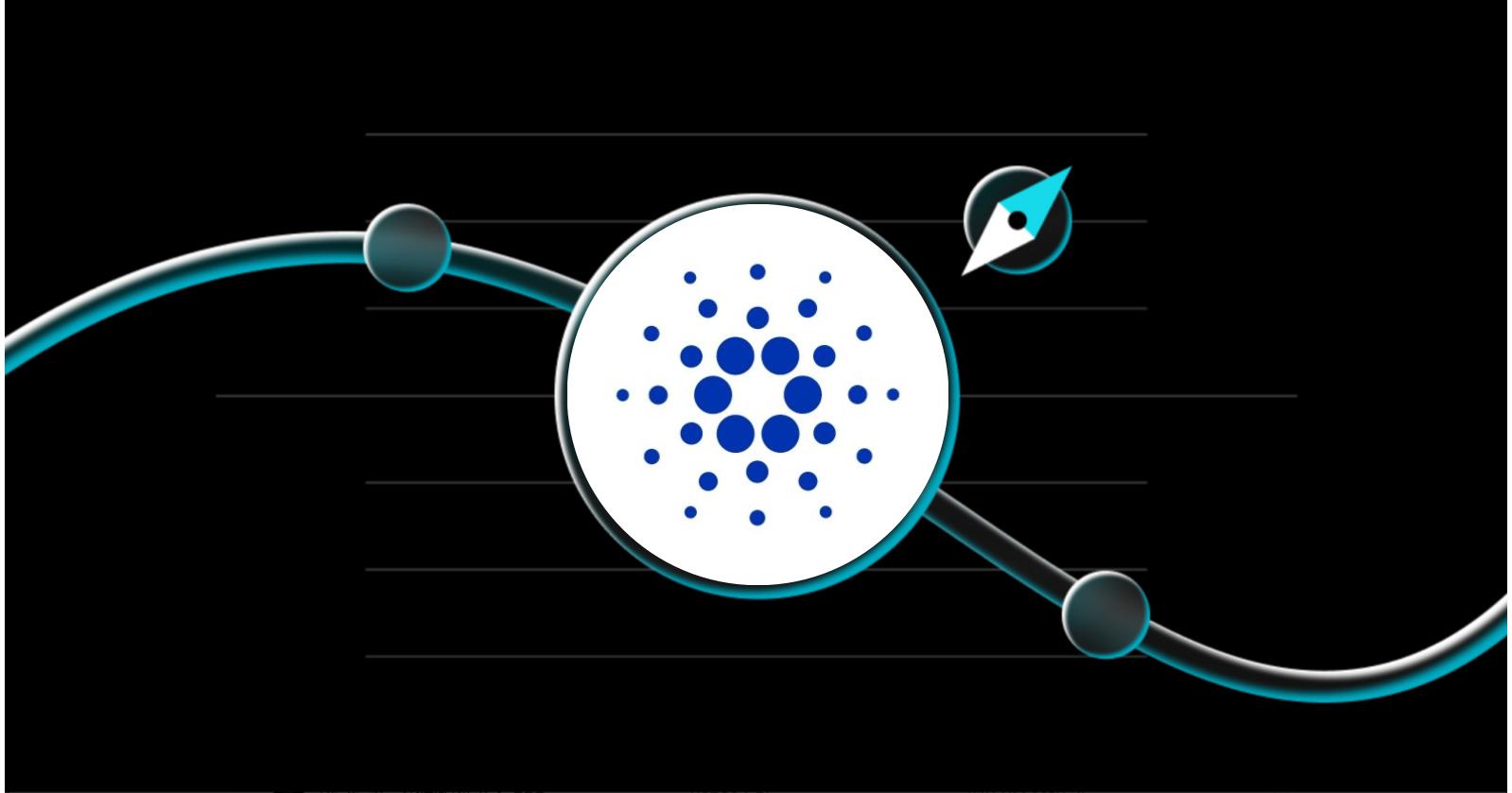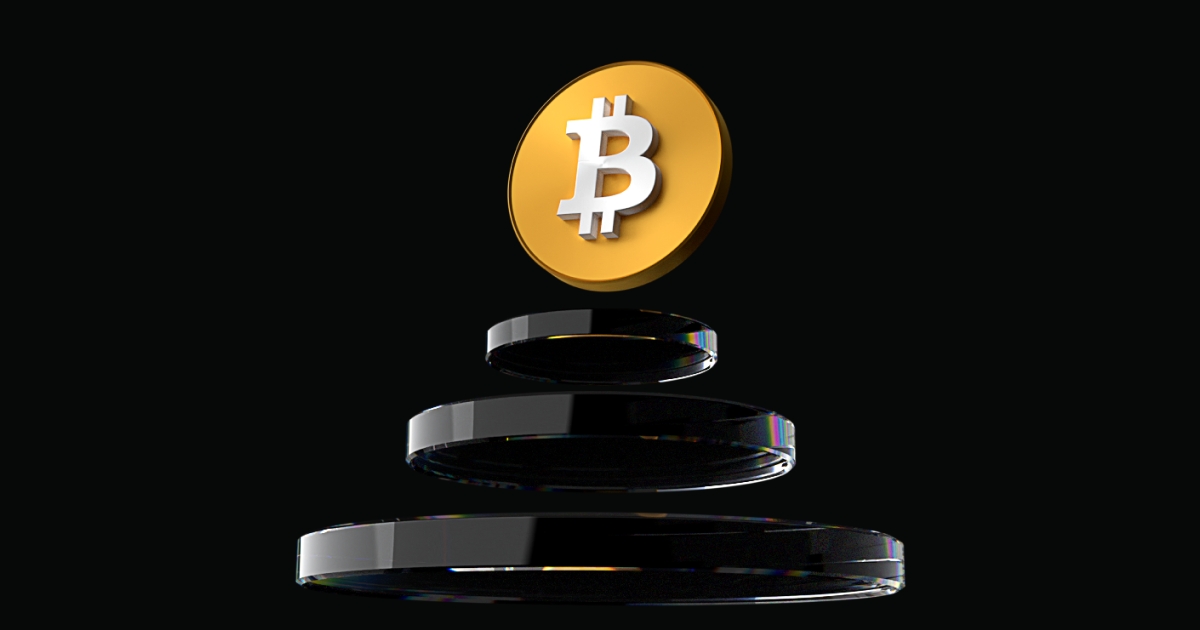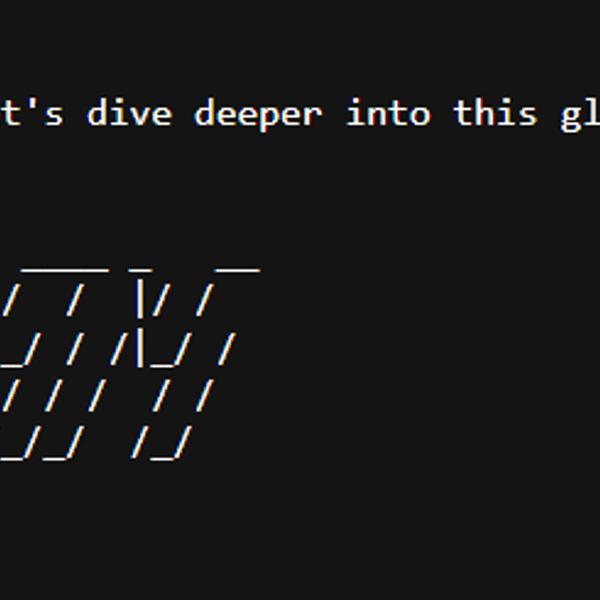Bitget: #4 mondial en volume de trading quotidien!
Part de marché du BTC58.15%
Frais de gaz ETH actuels: 0.1-1 gwei
Bitcoin Rainbow Chart: Accumulate
BTC/USDT$82834.16 (-9.63%)Indice Fear and Greed14(Peur extrême)
Altcoin Season Index:0(Saison du Bitcoin)
Total des flux nets des ETF Spot Bitcoin +$75.4M (1j) ; -$1.66B (7j).Pack de bienvenue pour les nouveaux utilisateurs d'une valeur de 6200 USDT.Récupérer
Tradez à tout moment et en tout lieu grâce à l'application Bitget !Télécharger maintenant
Bitget: #4 mondial en volume de trading quotidien!
Part de marché du BTC58.15%
Frais de gaz ETH actuels: 0.1-1 gwei
Bitcoin Rainbow Chart: Accumulate
BTC/USDT$82834.16 (-9.63%)Indice Fear and Greed14(Peur extrême)
Altcoin Season Index:0(Saison du Bitcoin)
Total des flux nets des ETF Spot Bitcoin +$75.4M (1j) ; -$1.66B (7j).Pack de bienvenue pour les nouveaux utilisateurs d'une valeur de 6200 USDT.Récupérer
Tradez à tout moment et en tout lieu grâce à l'application Bitget !Télécharger maintenant
Bitget: #4 mondial en volume de trading quotidien!
Part de marché du BTC58.15%
Frais de gaz ETH actuels: 0.1-1 gwei
Bitcoin Rainbow Chart: Accumulate
BTC/USDT$82834.16 (-9.63%)Indice Fear and Greed14(Peur extrême)
Altcoin Season Index:0(Saison du Bitcoin)
Total des flux nets des ETF Spot Bitcoin +$75.4M (1j) ; -$1.66B (7j).Pack de bienvenue pour les nouveaux utilisateurs d'une valeur de 6200 USDT.Récupérer
Tradez à tout moment et en tout lieu grâce à l'application Bitget !Télécharger maintenant


Prévisions des prix de Delta (DELTA)
Combien pourrait valoir Delta en 2025, 2026, 2030 et au-delà ? Quel est le prix prévu de Delta pour demain, cette semaine ou ce mois-ci ? Et quel retour sur investissement pourriez-vous obtenir en détenant Delta jusqu'en 2050 ?
Cette page met à votre disposition des outils de prédiction du prix de Delta à court et à long terme, afin de vous aider à évaluer l'évolution future du prix de Delta. Vous pouvez également définir vos propres prédictions pour estimer la valeur future de Delta.
Il est important de noter que, compte tenu de la volatilité et de la complexité inhérentes au marché des cryptomonnaies, ces prédictions, tout en offrant un aperçu des fourchettes de prix et des scénarios potentiels, doivent être considérées avec prudence et scepticisme.
Cette page met à votre disposition des outils de prédiction du prix de Delta à court et à long terme, afin de vous aider à évaluer l'évolution future du prix de Delta. Vous pouvez également définir vos propres prédictions pour estimer la valeur future de Delta.
Il est important de noter que, compte tenu de la volatilité et de la complexité inhérentes au marché des cryptomonnaies, ces prédictions, tout en offrant un aperçu des fourchettes de prix et des scénarios potentiels, doivent être considérées avec prudence et scepticisme.
Le prix de cette crypto n'a pas été mis à jour ou a cessé de l'être. Les informations sur cette page sont fournies à titre indicatif uniquement. Vous pouvez consulter les cryptos listées sur le marché Spot Bitget.
Tableau prévisionnel des prix de Delta pour 2025 et au-delà
Prédiction du prix de Delta dans les 10 prochains jours sur la base d'un taux de croissance quotidien prévu de +0,014%.
Prix aujourd'hui (Nov 21, 2025)
$0
Prix demain (Nov 22, 2025)
$0
Prix dans 5 jours (Nov 26, 2025)
$0
Prix ce mois-ci (Nov 2025)
$0
Prix le mois prochain (Dec 2025)
$0
Prix dans 5 mois (Apr 2026)
$0
Prix en 2025
$0
Prix en 2026
$0
Prix en 2030
$0
D'après les prévisions de prix quotidiennes à court terme de Delta, le prix de Delta devrait être de $0 le Nov 21, 2025, de $0 le Nov 22, 2025, et de $0 le Nov 26, 2025. D'après les prédictions de prix mensuelles de Delta, le prix de Delta devrait être de $0 en Nov 2025, de $0 en Dec 2025, et de $0 en Apr 2026. D'après les prédictions de prix annuelles à long terme de Delta, le prix de Delta devrait être de $0 en 2025, de $0 en 2026, et de $0 en 2030.
Prédiction du prix de Delta aujourd'hui
Le prix actuel de Delta (DELTA) est de $0, avec une variation de prix sur 24h de 0.00%. Le prix de Delta (DELTA) devrait atteindre $0 aujourd'hui. En savoir plus sur : Prix de Delta aujourd'hui.
Prédiction du prix de Delta en Nov 2025
Le prix de Delta (DELTA) devrait évoluer de --% en Nov 2025, et le prix de Delta (DELTA) devrait atteindre $0 d'ici fin Nov 2025.
Prédiction de prix de Delta pour 2025
Le prix de Delta (DELTA) devrait évoluer de --% en 2025, et le prix de Delta (DELTA) devrait atteindre $0 d'ici la fin de l'année 2025.
Prédiction du prix de Delta à long terme : 2026, 2030, 2035, 2040, 2050
Ce qui suit est un modèle de prédiction des prix de Delta sur la base d'un taux de croissance fixe. Il ne tient pas compte des fluctuations du marché, des facteurs économiques extérieurs ou des situations exceptionnelles, et se concentre uniquement sur la tendance moyenne du prix de Delta. Il aide les investisseurs à analyser et à calculer rapidement le potentiel de profit d'un investissement en Delta.
Saisissez votre taux de croissance annuel prévu pour le prix de Delta, et voyez comment la valeur de Delta évoluera à l'avenir.
Saisissez votre taux de croissance annuel prévu pour le prix de Delta, et voyez comment la valeur de Delta évoluera à l'avenir.
Prédiction de prix annuelle de Delta sur la base d'un taux de croissance annuel prévu de 5%.
%
Croissance annuelle prévue. Saisissez un pourcentage compris entre -100% et +1000%.
| Année | Prix prédit | ROI total |
|---|---|---|
2026 | $0 | +5.00% |
2027 | $0 | +10.25% |
2028 | $0 | +15.76% |
2029 | $0 | +21.55% |
2030 | $0 | +27.63% |
2035 | $0 | +62.89% |
2040 | $0 | +107.89% |
2050 | $0 | +238.64% |
Sur la base d'un taux de croissance annuel de 5%, le prix de Delta (DELTA) devrait atteindre $0 en 2026, $0 en 2030, $0 en 2040, et $0 en 2050.
Prédiction de prix de Delta pour 2026
En 2026, sur la base d'un taux de croissance annuel prévu de 5%, le prix de Delta (DELTA) devrait atteindre $0. Sur la base de ces prédictions, le rendement cumulé de l'investissement issu de la détention de Delta jusqu'à la fin de l'année 2026 serait de 5.00%.
Prédiction de prix de Delta pour 2030
En 2030, sur la base d'un taux de croissance annuel prévu de 5%, le prix de Delta (DELTA) devrait atteindre $0. Sur la base de ces prédictions, le rendement cumulé de l'investissement issu de la détention de Delta jusqu'à la fin de l'année 2030 serait de 27.63%.
Prédiction de prix de Delta pour 2035
En 2035, sur la base d'un taux de croissance annuel prévu de 5%, le prix de Delta (DELTA) devrait atteindre $0. Sur la base de ces prédictions, le rendement cumulé de l'investissement issu de la détention de Delta jusqu'à la fin de l'année 2035 serait de 62.89%.
Prédiction de prix de Delta pour 2040
En 2040, sur la base d'un taux de croissance annuel prévu de 5%, le prix de Delta (DELTA) devrait atteindre $0. Sur la base de ces prédictions, le rendement cumulé de l'investissement issu de la détention de Delta jusqu'à la fin de l'année 2040 serait de 107.89%.
Prédiction de prix de Delta pour 2050
En 2050, sur la base d'un taux de croissance annuel prévu de 5%, le prix de Delta (DELTA) devrait atteindre $0. Sur la base de ces prédictions, le rendement cumulé de l'investissement issu de la détention de Delta jusqu'à la fin de l'année 2050 serait de 238.64%.
Combien gagnerez-vous grâce à vos actifs Delta ?
Si vous investissez $100 en Delta cette année et conservez ce montant jusqu'en 2026, les prédictions de prix suggèrent un profit potentiel de $5, reflétant un ROI de 5.00%. (Les frais ne sont pas inclus dans cette estimation).
Avertissement : ceci n'est pas un conseil d'investissement. Les informations communiquées sont fournies à titre informatif uniquement. Aucune information, aucun contenu, service ou autre élément proposé sur cette page ne constitue une sollicitation, une recommandation, une approbation ou un conseil financier, en investissement ou autre, de quelque nature que ce soit. Demandez une consultation professionnelle indépendante sous forme de conseils juridiques, financiers et fiscaux avant de prendre toute décision d'investissement.
Tableau de prédiction du prix de Delta à court terme
Prévision de prix quotidienne de Delta sur la base d'un taux de croissance quotidien prévu de 0.014%
Quelles sont les prévisions de prix pour Delta pour demain, dans 5 jours, 10 jours et au-delà ?%
Croissance quotidienne prévue. Saisissez un pourcentage compris entre -100% et +1000%.
| Date | Prix prédit | ROI total |
|---|---|---|
Nov 22, 2025 (Demain) | $0 | +0.01% |
Nov 23, 2025 | $0 | +0.03% |
Nov 24, 2025 | $0 | +0.04% |
Nov 25, 2025 | $0 | +0.06% |
Nov 26, 2025 (5 jours) | $0 | +0.07% |
Nov 27, 2025 | $0 | +0.08% |
Nov 28, 2025 | $0 | +0.10% |
Nov 29, 2025 | $0 | +0.11% |
Nov 30, 2025 | $0 | +0.13% |
Dec 1, 2025 (10 jours) | $0 | +0.14% |
Basé sur un taux de croissance quotidien de 0.014%, le prix de Delta (DELTA) devrait atteindre $0 le Nov 22, 2025, $0 dans Nov 26, 2025, et $0 dans Dec 1, 2025.
Prédiction de prix de Delta pour Nov 22, 2025
Basé sur le taux de croissance quotidien de 0.014% pour la prévision de prix de Delta, la valeur estimée de 1 Delta sera de $0 le Nov 22, 2025 (Demain). Le ROI attendu de l'investissement et de la détention de Delta jusqu'à la fin du Nov 22, 2025 est de 0.01%.
Prédiction de prix de Delta pour Nov 26, 2025
Basé sur le taux de croissance quotidien de 0.014% pour la prévision de prix de Delta, la valeur estimée de 1 Delta sera de $0 le Nov 26, 2025 (5 jours). Le ROI attendu de l'investissement et de la détention de Delta jusqu'à la fin du Nov 26, 2025 est de 0.07%.
Prédiction de prix de Delta pour Dec 1, 2025
Basé sur le taux de croissance quotidien de 0.014% pour la prévision de prix de Delta, la valeur estimée de 1 Delta sera de $0 le Dec 1, 2025 (10 jours). Le ROI attendu de l'investissement et de la détention de Delta jusqu'à la fin du Dec 1, 2025 est de 0.14%.
Prévision de prix mensuelle de Delta sur la base d'un taux de croissance mensuel prévu de 0.42%
Quelles sont les prévisions de prix pour Delta pour le mois prochain, dans 5 mois, 10 mois et au-delà ?%
Croissance mensuelle prévue. Saisissez un pourcentage compris entre -100% et +1000%.
| Date | Prix prédit | ROI total |
|---|---|---|
Dec 2025 (Mois suivant) | $0 | +0.42% |
Jan 2026 | $0 | +0.84% |
Feb 2026 | $0 | +1.27% |
Mar 2026 | $0 | +1.69% |
Apr 2026 (5 mois plus tard) | $0 | +2.12% |
May 2026 | $0 | +2.55% |
Jun 2026 | $0 | +2.98% |
Jul 2026 | $0 | +3.41% |
Aug 2026 | $0 | +3.84% |
Sep 2026 (10 mois plus tard) | $0 | +4.28% |
Basé sur un taux de croissance mensuel de 0.42%, le prix de Delta (DELTA) devrait atteindre $0 en Dec 2025, $0 en Apr 2026, et $0 en Sep 2026.
Prédiction de prix de Delta pour Dec 2025
Basé sur un taux de croissance mensuel de 0.42%, le prix prévu de Delta (DELTA) en Dec 2025 (Mois suivant) est de $0. Le ROI attendu de l'investissement et de la détention de Delta jusque fin Dec 2025 est de 0.42%.
Prédiction de prix de Delta pour Apr 2026
Basé sur un taux de croissance mensuel de 0.42%, le prix prévu de Delta (DELTA) en Apr 2026 (5 mois plus tard) est de $0. Le ROI attendu de l'investissement et de la détention de Delta jusque fin Apr 2026 est de 2.12%.
Prédiction de prix de Delta pour Sep 2026
Basé sur un taux de croissance mensuel de 0.42%, le prix prévu de Delta (DELTA) en Sep 2026 (10 mois plus tard) est de $0. Le ROI attendu de l'investissement et de la détention de Delta jusque fin Sep 2026 est de 4.28%.
Articles sur les tendances de prédiction de prix des cryptomonnaies

Solana Price Prediction: Is a Major Rebound on the Horizon?
As Solana (SOL) consolidates near key levels following a recent downturn, investors are keen to know: has the selling pressure created a fresh opportunity? By examining on-chain activity, technical signals, and wider institutional sentiment, we can gain a comprehensive view on where Solana’s price could head next.
Source: CoinMarketCap
Solana’s Recent Price Movements: Signs of Stabilization?
Following a substantial pullback, Solana is currently rebounding off the crucial $130 support zone. This area historically attracts strong buyer interest, and price action shows clear commitment from bulls as sellers fade. Notably, Solana’s chart is forming a higher-low structure—often a precursor to trend reversals—while the Stochastic RSI has just lifted from oversold territory, indicating renewed buyer momentum.
Immediate resistance lies at $168. A decisive break above this level could pave the way for a move to $208, the next major resistance and potential confirmation of a new uptrend.
Whale Activity: Are Big Investors Quietly Accumulating SOL?
On-chain data reveals significant whale activity during this market dip. Recently, two newly created wallets withdrew 70,000 SOL from one exchange, while another removed over 100,000 SOL across four leading exchanges. These swift, sizable moves reflect purpose-driven accumulation rather than routine transfers, with aggressive buyers moving SOL into self-custody. Historically, such behavior often foreshadows price recoveries, as sophisticated actors seek to buy at optimal points of risk and reward.
Average spot order sizes have also surged, underlying this accumulation narrative.
Source: CryptoQuant
Trader Sentiment: Is the Market Ready for a Bullish Move?
Derivatives market data underscores a bullish turn in sentiment. 77.71% of positions across major exchanges are long, with a Long/Short Ratio of 3.49—a clear sign that the majority of traders are betting on further upside. This leveraged positioning reflects greater confidence, especially as price bounces from established demand zones.
Meanwhile, open interest in SOL futures has climbed 5% in just 24 hours, reaching $7.3 billion, according to CoinGlass. Funding rates, which turned positive, further indicate that traders are willing to pay a premium to maintain long exposure—a traditional marker of strengthened bullish conviction.
Spot market data also shows rising Cumulative Volume Delta (CVD), reinforcing that real buyers, not just speculators, are supporting the rally.
Institutional Flows: SOL ETFs Are Seeing Continuous Inflows
Institutional adoption is playing a growing role in the Solana price narrative. Solana-based spot ETFs have logged 15 consecutive days of net inflows, with US-based funds alone attracting over $8 million in a single session and $390 million in total inflows, according to SoSoValue. Assets under management now exceed $593 million.
In a landmark move, 21Shares launched its spot Solana ETF (TSOL) with $100 million in initial assets. Bloomberg data highlights that the broader Solana ETF universe is attracting daily inflows, even amidst periods of volatility and extreme market fear. Furthermore, major asset managers like VanEck are now offering SOL ETFs, enhancing credibility and liquidity for the asset.
Conclusion: Will Solana’s Price Recover from Here?
Multiple signals point to a potential rebound for Solana:
Technical structure: SOL is holding key demand zones and building a higher-low formation, with early momentum returning.
On-chain and spot market data: Whales are aggressively accumulating, and average trade sizes are rising, indicating strategic entry by high-value investors.
Trader positioning: Long bias in the derivatives market, coupled with increasing open interest and positive funding rates, supports a bullish outlook.
Institutional flows: Continuous spot ETF inflows highlight strong demand from both individual and institutional investors.
While risks such as market volatility and over-leveraged positions remain, this confluence of technical, on-chain, trading, and institutional support creates a compelling case for a Solana price recovery. If bulls can reclaim $168 and sustain momentum, the path toward $208—and a fresh uptrend—becomes increasingly likely.
Disclaimer: The opinions expressed in this article are for informational purposes only. This article does not constitute an endorsement of any of the products and services discussed or investment, financial, or trading advice. Qualified professionals should be consulted prior to making financial decisions.
Bitget Academy2025-11-20 12:20

What Is Tensor (TNSR)? The Solana NFT Marketplace Bringing Pro-Level Tools to the Masses
As the NFT market continues to evolve beyond the hype cycles of 2021, a new generation of platforms is emerging to support traders who expect speed, liquidity, and data-driven execution. While Solana has long been recognized for its low-cost, high-throughput environment, the chain’s NFT sector has recently entered a new phase — one increasingly defined by professional-grade tooling. At the center of that shift is Tensor, a fast-growing marketplace that has quickly become a dominant force in Solana NFT trading.
Launched in 2022, Tensor has built an infrastructure-focused approach that appeals to both casual collectors and power users who treat NFTs like an active trading asset. Its rise culminated with the launch of TNSR, the platform’s governance token, which aims to decentralize decision-making and reward the traders who help fuel its ecosystem. As Solana’s NFT activity gains momentum, Tensor is positioning itself as a marketplace built not just for browsing JPEGs — but for serious traders looking for execution speed, advanced analytics, and deeper market liquidity.
What Is Tensor (TNSR)?
Tensor is a Solana-native, professional-grade NFT marketplace and trading infrastructure built for active traders, creators, and high-frequency market participants. Launched in 2022 by Richard Wu and Ilja Moisejevs, Tensor differentiates itself from simple NFT galleries by aggregating liquidity across Solana’s NFT ecosystem, connecting major marketplaces while providing real-time data, historical price charts, and advanced order types. Its “pro” interface gives traders the tools to make informed decisions, while a lighter mode ensures casual collectors can navigate the marketplace easily.
Tensor is designed to serve both the casual collector and the professional trader. Beyond just listing and buying NFTs, it provides analytics, collection tracking, and bulk transaction capabilities, making it a hub for serious Solana NFT trading. By focusing on speed, liquidity, and accessibility, Tensor has quickly emerged as one of the leading NFT marketplaces on the Solana blockchain.
How Tensor (TNSR) Works
Tensor operates as a professional-grade NFT trading hub, combining advanced features for traders, creators, and collectors in a single platform. It aggregates liquidity from multiple Solana marketplaces and provides tools that make NFT trading faster, more efficient, and data-driven.
● Aggregated Liquidity: Tensor connects to all major Solana NFT marketplaces, allowing users to see the best prices and execute trades without switching platforms.
● Advanced Analytics: Traders can access floor-price charts, historical sales data, and collection-level analytics to identify opportunities.
● Bulk Trades: Users can buy or sell multiple NFTs in a single transaction, streamlining large trades and “sweeps” of collections.
● AMM Integration: Tensor incorporates automated market-making pools for NFTs, enabling liquidity provision and passive earning opportunities.
● Creator Tools: NFT creators can manage collections, update metadata, and launch new NFTs through a dedicated dashboard.
● Social Trading (Vector.fun): The companion app allows users to broadcast trades, follow other traders, and copy strategies, creating a community-driven trading experience.
Tensor (TNSR) Tokenomics
Tensor (TNSR) Token Allocation
The TNSR token is the native governance and utility token of the Tensor ecosystem, designed to align incentives between the platform and its community. Tensor has a total supply of 1 billion TNSR, allocated across several categories to support long-term development, platform growth, and user engagement. Community members receive 55% (550M) of the supply, which includes rewards for early adopters, seasonal incentive programs, and ongoing engagement initiatives. Core contributors are allocated 27% (270M), while investors and advisors hold 9% (90M), and the remaining 9% (90M) is reserved for future development and ecosystem expansion.
Most allocations, particularly those for the team, investors, and community incentives, vest over multiple years, often with a one-year cliff followed by linear vesting. This approach promotes long-term commitment and stability within the ecosystem. Beyond distribution, TNSR serves as a governance tool, enabling holders to vote on protocol proposals, fee structures, and treasury management. Coupled with seasonal rewards and incentive programs, TNSR encourages active participation, ensuring that both users and developers benefit from the platform’s ongoing growth.
Tensor (TNSR) Price Prediction for 2025, 2026–2030
Tensor (TNSR) Price
Source: CoinMarketCap
As of this writing, Tensor (TNSR) is trading around $0.08, reflecting its position in Solana’s NFT ecosystem and the adoption of the Tensor platform. While crypto markets are inherently volatile, analysts and forecasting models provide potential scenarios for TNSR over the next decade:
● 2025 Price Prediction: TNSR could see moderate growth, with estimates ranging from $0.06 to $0.11, depending on adoption, Solana’s NFT market expansion, and general market conditions. Increased platform activity and new feature rollouts could drive the token toward the higher end.
● 2026 Price Prediction: With continued ecosystem growth and wider adoption of Tensor’s tools, TNSR may reach $0.16–$0.17. Social trading adoption via Vector.fun and further liquidity integrations could boost user engagement.
● 2027 Price Prediction: Bullish scenarios see TNSR climbing to $0.24–$0.25, reflecting potential dominance in the Solana NFT market. Conversely, market corrections or competition could limit growth to around $0.18–$0.19.
● 2028 Price Prediction: Expansion into additional NFT features, partnerships, and sustained Solana growth could push TNSR to $0.35–$0.36, though bearish conditions may keep it below $0.25.
● 2029 Price Prediction: Assuming strong adoption and token utility, TNSR could trade near $0.50, while underperforming market conditions might limit it to $0.30–$0.35.
● 2030 Price Prediction: Long-term projections are highly speculative, but optimistic models estimate TNSR at $0.73–$0.75 if Tensor maintains its market share and ecosystem influence. Pessimistic scenarios place it around $0.40–$0.45.
These projections consider Tensor’s current growth trajectory, Solana NFT market trends, and potential user adoption. Investors should note that these are speculative scenarios, and actual performance will depend on market dynamics, competition, and broader crypto conditions.
Conclusion
Tensor has quickly established itself as a leading NFT marketplace on Solana, combining advanced trading tools, aggregated liquidity, and a growing ecosystem that appeals to both casual collectors and professional traders. By offering features like bulk trading, real-time analytics, AMM pools, and social trading through Vector.fun, Tensor goes beyond a standard marketplace, creating a platform built for speed, efficiency, and data-driven decision-making.
The TNSR token further strengthens the ecosystem by enabling governance participation and rewarding active users, aligning community incentives with platform growth. As Solana’s NFT market continues to expand, Tensor is well-positioned to maintain its leadership, offering traders and creators a professional-grade environment while helping to shape the next generation of NFT trading infrastructure.
Disclaimer: The opinions expressed in this article are for informational purposes only. This article does not constitute an endorsement of any of the products and services discussed or investment, financial, or trading advice. Qualified professionals should be consulted prior to making financial decisions.
Bitget Academy2025-11-20 05:18

Gold Price Forecast: XAU/USD Rallies Past $4,100 Amid Fed Rate‑Cut Hopes
Gold surged past the $4,100 mark this week, extending a powerful rally that has captivated markets and highlighted growing investor conviction that the Federal Reserve is nearing a pivot toward rate cuts. Spot gold (XAU/USD) rose as high as $4,113 per ounce in intraday trading, supported by softening U.S. economic data, falling Treasury yields, and a pullback in the U.S. dollar. The rally places gold among the year’s top-performing assets, with bullion gaining over 55% year-to-date, fueled by safe-haven flows and expectations of monetary easing.
The breakout above $4,100 underscores a market increasingly pricing in a shift in Fed policy amid signs of labor market cooling and subdued inflation. Dovish interpretations of recent economic indicators, including disappointing jobs figures and falling consumer sentiment, have bolstered bets that the central bank could begin cutting rates as early as December. As uncertainty lingers around fiscal policy and global risk sentiment remains fragile, gold’s rise reflects a broadening investor preference for hard assets amid expectations of a looser policy stance.
Why Gold Is Rallying: Key Macro Forces at Play
Source: goldprice.org
Gold’s surge past $4,100 is being powered by a combination of softening U.S. economic data, shifting Federal Reserve expectations and robust central bank accumulation. Recent signs of cooling in the labor market — including weaker private-sector hiring and elevated jobless claims — have strengthened the case for a December rate cut. As markets increasingly anticipate looser monetary policy, the appeal of non-yielding assets like gold continues to rise, helping to push XAU/USD to fresh highs.
Global uncertainty is adding another layer of support. Central banks remain aggressive buyers as they diversify away from the U.S. dollar amid geopolitical tensions and long-term reserve strategy shifts. Investor demand is also reinforcing momentum, with inflows into gold-backed funds climbing steadily as traders seek protection from currency debasement and economic volatility. Together, these macro forces have created a powerful tailwind that continues to drive gold’s upward trajectory.
Momentum Builds: Key Levels to Watch for XAU/USD
Gold’s decisive break above the $4,100 threshold has reinforced its bullish technical structure, with momentum indicators signaling that buyers remain firmly in control. The recent move higher followed a clean rebound from the $4,050 support zone, a level that has repeatedly attracted dip-buyers throughout November. As long as gold holds above this area, market technicians view the broader uptrend as intact.
On the upside, the metal is now testing a resistance band between $4,125 and $4,190 — a zone that previously capped rallies earlier in the month. A sustained close above this region would expose the next targets at $4,252 and the 2025 peak near $4,382. Beyond that, extended Fibonacci projections point toward longer-term upside levels around $4,550 should bullish momentum accelerate.
If the market turns lower, initial support sits near $4,100, followed by a deeper technical floor at $4,000. A break below this psychological level could trigger a broader correction, opening a move back toward $3,930. For now, however, the balance of risk still leans to the upside, with trend-following funds and options flow continuing to favor further gains.
Rate-Cut Bets Shape the Near-Term Gold Narrative
Markets have grown increasingly convinced that the Federal Reserve will deliver further rate cuts, with traders pricing in nearly a 45–50% probability of a reduction in December. This expectation is largely driven by soft U.S. labor-market data — including weaker private-sector hiring and elevated weekly jobless claims — which has cast doubt on the strength of the economic recovery. Many see gold as a direct beneficiary: as borrowing costs fall, the opportunity cost of holding non-yielding bullion drops, boosting its appeal.
At the same time, geopolitical uncertainty and persistent economic risks are keeping investors in the gold trade. Safe-haven flows remain a key pillar of demand even as financial markets show signs of stabilization. Meanwhile, central banks are continuing to aggressively accumulate gold, reinforcing the broader narrative that gold is not just a cyclical trade but a strategic store of value.
Major institutions are projecting that this backdrop could support continued price appreciation through 2026 and beyond. Some forecasts suggest gold could test or even surpass $5,000/oz, driven by a combination of sustained central bank buying, de-dollarization trends, and ongoing liquidity support from monetary easing. That said, the path forward for gold is not without risk: a hawkish pivot from the Fed, a surprise rebound in inflation, or a bounce in real yields could weigh on the rally.
The Multi-Year Bull Case for Gold Strengthens
Looking beyond the immediate policy cycle, gold’s long-term trajectory remains firmly supported by structural demand and shifting global reserve dynamics. Central banks continue to play an outsized role in shaping the multi-year outlook, with sustained purchases indicating a strategic move away from dollar concentration. This trend has become a defining force in the bullion market, providing a reliable anchor that reinforces gold’s role as a long-term store of value.
Investment demand is also expected to strengthen as macro conditions evolve. Persistent fiscal deficits, a softer U.S. dollar over the medium term, and the likelihood of an extended period of lower real rates all contribute to a bullish strategic backdrop. Many institutional forecasts now place gold comfortably within the mid-$4,000s over the next two years, with some scenarios projecting moves toward or even above the $5,000 level if monetary easing accelerates and geopolitical tensions persist.
Still, the long-term path is not without its potential headwinds. A rebound in global growth, a stronger-than-expected recovery in risk assets or a renewed tightening cycle could temper gold’s upside. But for now, the prevailing consensus is that macro conditions favor continued accumulation, especially among reserve managers and long-horizon investors who see gold as an effective hedge against policy uncertainty and currency risk.
Gold Price Prediction: Key Levels and Potential Paths
With gold trading firmly above $4,100, market participants are weighing several potential paths that could shape XAU/USD in the coming months. Traders are monitoring key technical levels, Fed signals, and macro conditions to gauge whether the rally continues, consolidates, or experiences a correction.
● Bullish Scenario: A sustained break above the $4,125–$4,190 resistance band could target $4,252 and the 2025 high near $4,382. If momentum strengthens, fueled by dovish Fed moves or heightened risk aversion, gold could extend toward $4,550.
● Consolidation Scenario: Gold may remain range-bound between $4,050 and $4,100 if economic data or Fed communications produce mixed signals. This sideways pattern would allow the market to digest recent gains while preserving the broader bullish trend.
● Bearish Scenario: A drop below $4,050 would indicate weakening momentum. Falling under the psychological $4,000 level could trigger a pullback toward $3,930, though a deeper correction would likely require a shift in Fed expectations or a sharp rise in real yields.
Conclusion
Gold’s break above $4,100 underscores the market’s growing conviction that Federal Reserve rate cuts are on the horizon, supported by softening economic data and persistent macro uncertainty. Both technical momentum and fundamental drivers — including central bank accumulation, safe-haven demand, and investor positioning — point to continued upside potential in the near term. Key levels around $4,125–$4,190 will be critical in determining whether the rally extends toward the 2025 highs and beyond.
Looking further ahead, gold’s long-term outlook remains bullish, anchored by strategic central bank purchases, ongoing global risk concerns, and the potential for looser monetary policy. While short-term volatility may emerge in response to economic data or Fed communications, the broader trend favors continued accumulation and upside potential. For investors, XAU/USD remains a compelling hedge against policy uncertainty, currency risk, and market instability, with multi-year targets in the mid-$4,000s to above $5,000 still achievable if current macro dynamics persist.
Disclaimer: The opinions expressed in this article are for informational purposes only. This article does not constitute an endorsement of any of the products and services discussed or investment, financial, or trading advice. Qualified professionals should be consulted prior to making financial decisions.
Bitget Academy2025-11-19 16:57

Cardano Price Prediction: Market Shows Mixed Signals—Is Now the Time to Buy ADA?
Cardano’s ADA is back in the spotlight—though not for the reasons early bulls might have hoped. After an impressive start to 2025 that saw the token gain more than 60% year-to-date, momentum has cooled considerably. ADA is now hovering near the $0.47 mark, down roughly 45% from its mid-year peak, as the broader crypto market grapples with macro headwinds, profit-taking, and regulatory uncertainty.
Still, Cardano isn’t without a pulse. Beneath the surface, retail accumulation has picked up, capital inflows are rising, and the network continues to push forward with technical upgrades and ecosystem expansion. At the same time, whale outflows and weakening sentiment paint a more cautious picture. With the market sending conflicting signals, the question is back on the table: is this a dip worth buying—or a warning to stay on the sidelines?
Macro Backdrop: Crypto Crosswinds Put Pressure on ADA
It’s hard to talk about ADA’s price action without zooming out to the wider market. Over the past few months, risk sentiment across financial markets has deteriorated. Global equities, crypto assets, and even high-growth tech have seen a retrace as investors grow increasingly cautious about sticky inflation, central bank policy shifts, and geopolitical tension. Bitcoin, often seen as crypto’s bellwether, has struggled to hold above $95,000. As liquidity tightens and uncertainty creeps in, ADA—like most altcoins—has followed suit.
That said, the outlook isn’t entirely bearish. Many analysts now expect the U.S. Federal Reserve to pivot to rate cuts in late 2025, potentially lowering the federal funds rate closer to 2.75%. If realized, this shift could mark the beginning of a more favorable macro environment for risk assets, including cryptocurrencies. Meanwhile, the U.S. budget deadlock appears to be easing, and the narrative around a return to quantitative easing is gaining traction. For ADA, that could mean stronger institutional interest and renewed retail demand—provided broader confidence returns.
Regulation, another major macro lever, is also beginning to take shape. The EU’s Markets in Crypto-Assets (MiCA) framework is rolling out across member states, and U.S. lawmakers have floated proposals that would classify ADA as a commodity rather than a security. Such classification could provide a much-needed clarity boost and unlock access to traditional capital flows. For now, however, those developments remain more of a long-term tailwind than a near-term catalyst.
Price Compression or Breakdown? Where Cardano Stands Technically
Cardano (ADA) Price
Source: CoinmarketCap
Cardano’s price has been steadily coiling after its mid-year run, now hovering around $0.47. That puts ADA more than 45% below its 2025 high of $0.85, with the token stuck in a narrowing range. For many market watchers, this signals a classic compression pattern—an extended period of low volatility before a decisive move. But whether that move is upward or downward remains unclear.
Support near $0.45 has held so far, but just barely. A clean break below this level could see ADA revisit deeper support zones between $0.40 and $0.33. On the upside, regaining the $0.60 handle would likely shift short-term momentum in the bulls’ favor. Until then, traders remain cautious, with volume thinning and fewer signs of conviction on either side.
Sentiment across the Cardano community is just as mixed. On-chain data shows fresh inflows and retail accumulation, suggesting confidence in ADA’s long-term prospects. At the same time, recent whale sell-offs and broader market hesitation have injected uncertainty into the near-term outlook. With ADA trading in such a tight band, all eyes are now on whether the compression resolves into a breakout—or something more bearish.
Whales Sell, Retail Buys: What On-Chain Data Says About ADA’s Future
While ADA’s price action remains subdued, on-chain signals tell a more nuanced story. One of the most notable trends is the divergence between large holders and smaller investors. According to recent data, whales—wallets holding between 10 million and 100 million ADA—have sold off roughly 180 million tokens in recent weeks, offloading more than $120 million in value. This wave of distribution has added downward pressure on price and suggests that some institutional players are rotating out of their ADA positions.
In contrast, retail investors appear to be stepping in. Metrics like the Chaikin Money Flow (CMF) show rising inflows despite the price drop, signaling that smaller buyers are accumulating ADA at lower levels. The fact that this has occurred while prices trended lower may indicate a transfer of supply from weaker hands to long-term holders—a pattern often seen before recoveries.
Staking data further reinforces Cardano’s long-term strength. Roughly 67% of ADA’s total supply remains staked, and the network has grown to over 4.8 million active wallets. These numbers suggest that much of the community continues to engage with the ecosystem, even amid market turbulence. The fundamentals may not be enough to spark a rally on their own—but they do point to a base of investors who aren’t leaving any time soon.
Building Through the Dip: Cardano’s Fundamentals Remain Intact
Price aside, Cardano continues to build. The project’s development arm has maintained its measured, peer-reviewed approach, rolling out upgrades aimed at improving scalability, interoperability, and governance. One major milestone this year was the launch of Hydra—a layer-2 scaling solution capable of dramatically increasing throughput while maintaining low fees. Alongside that came CIP-112, a smart contract enhancement designed to improve code security through formal verification.
Cardano also made progress on its Ethereum-compatible sidechain, expanding the project’s developer reach and making it easier for existing Web3 applications to integrate with its ecosystem. These upgrades may not have caused immediate price reactions, but they speak to Cardano’s longer-term strategy: delivering real infrastructure that can scale responsibly.
That focus has started to pay off in real-world use cases. In Brazil, Cardano inked a deal with the federal technology agency SERPRO to help digitize public records and train thousands of developers to build on the blockchain. Similar partnerships are underway in education, sustainability, and supply chain tracking, signaling a pivot toward enterprise and government-grade applications.
For investors with a long-term horizon, these developments matter. They suggest that while ADA may be down in price, its underlying value proposition is only growing stronger. The question is whether the market will eventually reward that progress—or continue to favor faster-moving, hype-driven competitors in the near term.
Conclusion: Is It Time to Buy ADA?
Cardano’s current market structure reflects a broader sense of uncertainty gripping the crypto space. With ADA trading below key resistance, technical momentum fading, and whales reducing exposure, the short-term outlook remains cautious. Yet, strong staking participation, real-world adoption in regions like Brazil, and consistent ecosystem development suggest that ADA’s long-term foundation is not only intact—but quietly strengthening.
For long-term investors who prioritize fundamentals and can stomach short-term volatility, the recent dip may represent a strategic entry point. But for those seeking confirmation or a stronger macro tailwind, waiting for a clearer breakout or shift in sentiment could be the more prudent path. Either way, ADA remains a project to watch closely—its next move may not just be technical, but narrative-driven.
Disclaimer: The opinions expressed in this article are for informational purposes only. This article does not constitute an endorsement of any of the products and services discussed or investment, financial, or trading advice. Qualified professionals should be consulted prior to making financial decisions.
Bitget Academy2025-11-18 16:57

Bitcoin Price Prediction: Is the ‘World’s Smartest Man’ Right About $220K BTC?
Predicting Bitcoin’s price is never dull, but one recent forecast has turned more heads than usual. A South Korean prodigy who calls himself the “world’s smartest man” is boldly claiming that Bitcoin will soar to $220,000 within 45 days. Kim Young-hoon — officially recognized for having an IQ of 276 — made this audacious prediction on social media, insisting that “with God nothing shall be impossible.” He’s even pledged to donate 100% of any Bitcoin profits he makes at $220K to build churches around the world — adding a dramatic charitable twist to his moonshot.
Yet this bold call arrives at a moment of market turmoil. Bitcoin is not booming — it's bleeding. The cryptocurrency has been caught in a broad sell-off, recently plunging below $90,000 for the first time in 7 months, as traders react to inflation fears, uncertainty around interest rates, and major institutional outflows. The Crypto Fear & Greed Index has now sunk into “Extreme Fear” territory, reflecting widespread anxiety across the market. Against this backdrop of fear, volatility, and skepticism, Kim’s six-figure price target leaves many asking: Is this prophetic foresight — or peak hopium?
Who Is the “World’s Smartest Man,” and What Exactly Is He Predicting?
Kim Young-hoon is no ordinary forecaster. A South Korean entrepreneur who has claimed an IQ of 276, Kim brands himself as the “world’s smartest man” — a title that has helped him build an audience on social platforms, particularly within crypto circles. Recently, he issued his boldest prediction yet: Bitcoin will reach $220,000 in just 45 days.
Kim posted the forecast on X (formerly Twitter) in early November, writing:
“I expect #BITCOIN to hit $220,000 in the next 45 days.”
He added a surprising twist: if Bitcoin does reach that level, he intends to donate 100% of his profits to fund the building of churches worldwide. Alongside that pledge, he quoted from scripture — “for with God nothing shall be impossible” — further distinguishing his prediction from typical crypto commentary.
While Kim is not widely known in traditional finance or blockchain research circles, this isn’t the first time he has made ambitious claims about Bitcoin's future. He has previously suggested that BTC could increase by 100x over the next decade, positioning it as the eventual global monetary standard. Yet the latest projection stands out due to its urgency — a move to $220,000 would require Bitcoin to more than double in less than two months.
Critics are skeptical. Extraordinary intelligence, they argue, doesn’t necessarily correlate with market forecasting skills. Bitcoin has climbed aggressively during bull cycles, but a rapid ascent of over 120% in just weeks would require an unprecedented combination of macro, technical, and sentiment-driven catalysts.
Nevertheless, Kim’s statement has stirred debate — coming at a time when Bitcoin is facing extreme volatility and fear. Whether seen as faith-driven optimism or unfounded hype, the prediction has brought renewed attention to the question: just how high — and how fast — can Bitcoin really go?
Bitcoin Market Sell-Off and Fear: Why BTC Is Struggling Right Now
Bitcoin (BTC) Price
Source: CoinmarketCap
Kim’s $220,000 price target arrives at a moment when the market appears to be moving in the opposite direction. In mid-November, Bitcoin slid below $90,000 for the first time in seven months, marking a sharp reversal from its attempt to sustain six-figure levels just weeks earlier. At the same time, the Crypto Fear & Greed Index fell into “Extreme Fear” territory — signaling a fundamental shift in sentiment from optimism to caution.
The sell-off has been attributed to a confluence of macroeconomic and technical factors. First, Bitcoin’s repeated failure to comfortably hold above the psychological $100,000 threshold spooked traders and triggered a wave of profit-taking. A drop below key moving averages, including the 50-week exponential moving average, accelerated the pullback as stop-losses were triggered.
On the macro front, rising inflation expectations and uncertainty over Federal Reserve policy have amplified risk-off behavior across markets. Fresh data indicated persistent inflation pressure in the United States, prompting speculation that interest rate cuts could be pushed further into 2026 instead of arriving as early as December. With tightening financial conditions reducing liquidity, speculative assets like Bitcoin often bear the brunt.
The broader crypto market didn’t escape unscathed. Over $1 billion worth of leveraged positions were liquidated in a 24-hour period as cascading margin calls rippled through exchanges. Traders who had bet on a near-term rally were forced out, deepening volatility and feeding fear. In addition, institutional flows have turned negative, with U.S.-listed Bitcoin ETFs seeing more than $2.3 billion in outflows during November alone — the second-largest monthly withdrawal on record.
Combined, these signals point to a market under pressure rather than poised for a sudden moonshot. For Kim’s $220,000 scenario to play out in the next 45 days, Bitcoin would need more than a rebound — it would need a complete reversal in sentiment and a rapid influx of capital. So far, the data suggests the opposite.
Expert Consensus: Bullish on Bitcoin, But Not at Kim’s Pace
While Kim Young-hoon’s prediction of $220,000 in 45 days has stirred debate, it remains far outside the mainstream of current market forecasts. Even among Bitcoin’s most confident advocates, there is broad agreement that while a longer-term move to six figures is plausible, the timeline is likely measured in months or years — not weeks.
Take former BitMEX CEO Arthur Hayes, for example. In a recent market outlook, Hayes suggested Bitcoin could revisit the $80,000–$85,000 range before beginning its next major push toward $200,000–$250,000 — a target he sees as achievable by the end of 2025. Hayes argues that liquidity constraints and macroeconomic uncertainty must first resolve before Bitcoin can return to a sustained uptrend.
Similarly, MicroStrategy chairman Michael Saylor continues to advocate strongly for Bitcoin as a long-term treasury asset. Saylor has floated the idea that Bitcoin could eventually exceed $150,000 as institutional adoption grows — but even his outlook assumes a gradual trajectory based on corporate demand and regulatory clarity.
Robert Kiyosaki, author of Rich Dad Poor Dad, has also forecast Bitcoin rising to $180,000–$200,000 within the next year. Like Hayes and Saylor, Kiyosaki points to factors such as inflation, distrust in fiat currencies, and geopolitical instability as drivers — but none of these analysts predict a sudden price spike of the kind Kim proposes.
On the institutional side, JPMorgan has noted a potential Bitcoin price floor around $94,000 in the medium term, driven by mining costs and market structure. Yet even the bank's outlook is cautious. Their models expect a recovery from current lows but within a 6–12 month window, depending on global liquidity conditions.
Macro Reality Check: The Forces Keeping Bitcoin Below Six Figures
Beyond social media predictions and on-chain activity, the broader macroeconomic environment remains the single biggest barrier to Bitcoin’s return to six-figure levels — let alone a breakout to $220,000. While Bitcoin has historically shown resilience in uncertain conditions, the current confluence of headwinds has made a short-term rally increasingly difficult.
Federal Reserve Policy: Signs of persistent inflation have pushed expectations of rate cuts further into 2026. With interest rates staying higher for longer, liquidity in the market is constrained — a key headwind for speculative assets like Bitcoin.
U.S. ETF Outflows: November has seen the second-largest monthly redemption of U.S. Bitcoin ETF holdings on record, with an estimated $2.3 billion flowing out by mid-month. BlackRock alone saw more than 4,600 BTC in a single-day outflow, signaling institutional caution.
Mt. Gox Fears Return: The movement of 10,422 BTC — nearly $1 billion worth — from a dormant Mt. Gox wallet spooked markets earlier this month. While no immediate selling followed, traders fear these coins could eventually add supply pressure if redistributed to creditors.
Leverage Wipeouts: More than $1 billion in leveraged positions were liquidated in 24 hours during Bitcoin’s drop below $90K — one of the most aggressive liquidation events this year. The cascade contributed to a breakdown in support and sank market sentiment even further.
Broader Markets Under Strain: Fewer than 25% of S&P 500 industry groups are trading above their key moving averages — a sign of fragility in global risk appetite. When equities falter, Bitcoin often struggles to attract fresh capital inflows.
Taken together, these factors paint a clear picture: Bitcoin’s macro environment is hostile, not supportive of a parabolic move. Unless there is a dramatic shift — either in monetary policy, institutional sentiment, or large-scale capital flows — a near-term move to $220,000 appears highly improbable.
Can Bitcoin Still Hit $220K? What Would Need to Happen
Despite the current market conditions and skepticism from seasoned analysts, Bitcoin reaching $220,000 within the next 45 days is not impossible — but it is highly improbable without several unprecedented catalysts aligning in rapid succession. For Kim Young-hoon’s prediction to materialize, the following factors would need to converge almost perfectly:
1. A Major Liquidity Injection
The single most important requirement would be a flood of fresh capital into the market. This could come in the form of:
Large-scale institutional allocation, potentially via spot ETFs or sovereign wealth funds.
A sudden reversal in Federal Reserve policy, with early rate cuts leading to a new wave of risk-on behavior.
Global macro instability driving a flight to non-sovereign stores of value — a scenario where Bitcoin is perceived as “digital gold.”
2. New Regulatory Clarity
Regulation has been a major hurdle for institutional adoption. If one or more of the following occurred, it could accelerate capital inflows:
The SEC fast-tracks approval for U.S. spot Bitcoin ETFs and broadens the ETF universe to include retirement products.
Key jurisdictions, such as the EU or Japan, adopt clear frameworks classifying Bitcoin as a protected asset class.
Banking rules ease up to allow greater retail and institutional access to crypto markets.
3. A Shift in Market Narrative
Sentiment matters. For a price explosion of this scale to occur, Bitcoin would likely need a dramatic narrative pivot — from an asset under pressure to a vehicle for generational wealth. This could involve:
A major corporate announcement — for instance, Apple or Google adopting Bitcoin for treasury reserves.
Major geopolitical instability (e.g., currency crises) forcing individuals and institutions to flee into BTC.
A technological breakthrough or scaling event that rekindles long-term adoption hopes.
4. Technical Acceleration Above Key Levels
Even with favorable macro conditions, Bitcoin would still need to trigger powerful technical indicators:
Regain and hold above $100,000 with volume confirmation.
Flip previous all-time highs (~$116K–$118K) into support.
Hit into a self-reinforcing cycle of FOMO, leverage demand, and spot accumulation, similar to patterns seen in late 2017 and early 2021.
5. Faith and Speculation
While it may not be quantifiable, the factor underlying Kim’s prediction appears to be belief — not just in Bitcoin, but in the possibility of miracles. His use of religious language reinforces this. However, while enthusiasm can spark rallies, history shows that market cycles still require structural support first.
Conclusion
Bold Bitcoin forecasts are part of the fabric of crypto culture, and Kim Young-hoon’s prediction of $220,000 BTC in 45 days is no exception. Kim’s call, backed by his claim of extraordinary intelligence and a philanthropic pledge, taps into a sentiment many long-term Bitcoiners understand well — that, under the right circumstances, the market can move faster and higher than anyone expects. Yet this prediction lands just as Bitcoin is grappling with layered sell pressure and a shaken macro backdrop. It’s a striking contrast: while belief in Bitcoin’s long-term upside remains strong, conviction alone doesn’t overturn liquidity conditions, legacy coin supply, and cautious institutional positioning.
For now, the data tells a more cautious story. Bitcoin has shown an ability to recover from deep sell-offs before, and many analysts still expect six-figure prices in the next market cycle — just not in the next six weeks. Kim’s forecast might be inspiring for those looking beyond the charts, but the market is demanding patience and discipline. Whether this prediction proves prophetic or simply another ambitious headline, the lesson remains the same: Bitcoin rewards conviction—but it still obeys the realities of market structure, macroeconomics, and time.
Disclaimer: The opinions expressed in this article are for informational purposes only. This article does not constitute an endorsement of any of the products and services discussed or investment, financial, or trading advice. Qualified professionals should be consulted prior to making financial decisions.
Bitget Academy2025-11-18 11:39

Avantis (AVNT) Price Prediction 2025, 2026-2030
Avantis made waves across the crypto market in November 2025, when it landed a spot on the popular trading platform Robinhood. This wasn’t just another listing—it instantly opened the doors for millions of American investors to get their hands on AVNT for the first time.
AVNT price surged even as broader crypto markets were under pressure, and the platform’s total value locked (TVL) broke the $100 million barrier, according to DefiLlama. This spike, coupled with exceptional trading volume and protocol growth, has positioned Avantis as one of the most compelling projects of this cycle.
Currently, AVNT trades just above $0.50, with a fully diluted valuation around $130 million and high on-chain activity. As Avantis carves its niche in the booming perpetual DEX sector, the key question becomes: can the project maintain this pace of adoption and capitalize on its current buzz? This article unpacks what Avantis is, how it operates, and forecasts where AVNT’s price could head from 2025 through 2030.
Source: CoinMarketCap
What Is Avantis (AVNT)?
Avantis is a decentralized perpetual trading platform built on Base. It enables users to trade crypto, forex, commodities, and indices with up to 500x leverage using USDC as collateral. Unlike most DEXs that employ individual order books, Avantis uses a capital-efficient “universal leverage layer” — allowing any asset with reliable price feeds to be listed, including more than 80 markets with both crypto and real-world assets (RWAs).
All trading occurs against Avantis’s USDC vault, funded by liquidity providers (LPs), who can choose risk tranches and lockup periods tailored to their risk appetite. LPs are incentivized through yield, loss rebates for balancing open interest, and positive slippage for risk-reducing trades. Uniquely, Avantis features zero trading fees (traders pay a share of profits on winning trades only), making it attractive to high-frequency and arbitrage traders.
The $AVNT token acts as both a utility and governance asset, used for staking (to protect vault security), earning rewards, voting on protocol decisions, and supporting future ecosystem growth. 50.1% of all AVNT will be distributed to the community via airdrops, trading incentives, and grants. The rest is split among core developers, investors, and a foundation reserve.
2025 Price Prediction
Avantis (AVNT) Price
Source: CoinMarketCap, DefiLlama Data
The 2025 price outlook for AVNT is shaped by its Robinhood listing, rapid TVL growth, and competitive traction in the perpetuals DEX sector. The scenario analysis for 2025 is as follows:
Conservative scenario: After initial excitement cools as market participants take profits, AVNT could stabilize between $0.42 and $0.55 by year’s end, with an average near $0.48. This assumes market correction and an industry-wide risk-off period but continued protocol engagement.
Moderate scenario: Should Avantis maintain strong community participation and trading adoption, AVNT could trend between $0.60 and $0.85, averaging around $0.72. This would reflect steady user growth, maintained high TVL, and increased trading volumes through major exchanges.
Bullish scenario: If crypto market sentiment rebounds or Avantis captures further mindshare (via major partnerships, new listings, or expansion into additional RWAs), AVNT could revisit or surpass previous highs, ranging from $1.20 to $1.70 by year-end. This would require renewed buzz, expanding TVL, and robust trading demand.
2026 Price Prediction
2026 will be Avantis’s first major test beyond its launch growth phase. The project will likely move into a phase of deeper development, protocol upgrades, and broader adoption.
Conservative scenario: AVNT may trade between $0.60 and $0.70, averaging $0.66, if the project faces stiff competition or slows in onboarding new markets or users.
Moderate scenario: Continued product innovation and liquidity incentives could help AVNT trade between $0.80 and $1.10, with an average of $0.95, reflecting stable growth and broad protocol utility.
Bullish scenario: If Avantis claims a leadership spot in the perpetual DEX sector or launches successful cross-chain features, AVNT could climb to a $1.40–$1.60 range. Institutional adoption and listed derivatives on new exchanges would also support this higher valuation.
2027 Price Prediction
By 2027, Avantis will have established either long-term staying power or become outcompeted by newer protocols. Community, governance activity, and technological differentiation will play key roles.
Conservative scenario: With stable TVL but little innovation, AVNT could trade between $0.85 and $1.00, averaging $0.92.
Moderate scenario: Assuming sustained user growth and further expansion into new real-world and crypto markets, AVNT might reach $1.20 to $1.50, with highs approaching $1.60.
Bullish scenario: Major ecosystem breakthroughs (like integration with large DeFi protocols or RWAs), broader institutional adoption, or another DeFi bull run could propel AVNT to $2.20 or higher.
2028–2029 Price Prediction
These years are likely to coincide with a broader DeFi boom cycle, possibly tied to Bitcoin’s next halving or expansion of tokenized assets.
Conservative scenario (2028): $0.98–$1.15
Conservative scenario (2029): $1.20–$1.35In this case, AVNT tracks broader DeFi growth without breaking away as a market leader.
Moderate scenario (2028): $1.45–$1.75
Moderate scenario (2029): $1.80–$2.00Stable protocols, expanded RWA listings, and new exchange integrations drive prices higher.
Bullish scenario (2028): $2.15–$2.60
Bullish scenario (2029): $2.70–$3.20Here, AVNT benefits from first-mover advantage in RWA perps, breakthrough governance, and global scaling.
2030 Price Prediction
Long-term forecasts are inherently uncertain and depend on Avantis’s ability to evolve amid rapid DeFi innovation.
Conservative scenario: $1.35–$1.50, with an average around $1.42, assuming AVNT persists as a respected but niche protocol.
Moderate scenario: $1.95–$2.50, with the protocol maintaining or modestly expanding market dominance.
Bullish scenario: If Avantis pioneers new risk models, unlocks massive RWA integration, or attracts global institutions, AVNT could reach $3.50 or higher.
Key Factors Influencing AVNT’s Future Price
Several forces will determine AVNT’s price performance over the next five years:
Market sentiment and user growth: As with all DeFi tokens, vibrant community and active traders are crucial for sustained demand.
Protocol upgrades and innovation: Continuous deployment of new features (e.g., composable yield, new markets, refined risk models) will help retain protocol relevance.
Liquidity and exchange coverage: More listings on top-tier CEXs and DEXs will further legitimize AVNT, increase accessibility, and dampen volatility.
Governance and decentralization: Genuinely open participation in protocol decisions could drive long-term investor trust and value accrual.
Regulatory context: As DeFi faces more scrutiny, Avantis’s ability to remain compliant while fostering innovation will be critical.
Competition: The rise of rival perps DEXs or new RWA protocols poses both a risk and an opportunity for differentiation.
Adoption of real-world assets: Successful onboarding of real-world collateral and synthetics could be a major growth lever.
Conclusion
Avantis (AVNT) has made a splash in 2025, propelled by high-profile exchange listings, protocol growth, and a unique approach to DeFi derivatives. While momentum has driven strong price appreciation and community growth, only time will tell if Avantis can maintain this trajectory and become a core infrastructure layer in decentralized finance. Continued innovation, governance, and market adoption will be key for AVNT’s long-term value proposition—as will its ability to outpace competitors in this increasingly crowded field. For now, the project stands among the most intriguing plays in DeFi, with plenty of upside potential tempered by the challenges typical of new, fast-moving protocols.
Disclaimer: The opinions expressed in this article are for informational purposes only. This article does not constitute an endorsement of any of the products and services discussed or investment, financial, or trading advice. Qualified professionals should be consulted prior to making financial decisions.
Bitget Academy2025-11-14 11:39
Acheter DELTA sur Bitget en 3 étapes simples

Créez un compte Bitget gratuit
Inscrivez-vous sur Bitget avec votre adresse e-mail/numéro de portable et créez un mot de passe robuste pour sécuriser votre compte.

Vérifiez votre compte
Vérifiez votre identité en saisissant vos informations personnelles et en téléchargeant une photo d'identité valide.

Acheter DELTA (DELTA)
Utilisez divers moyens de paiement pour acheter DELTA sur Bitget. Nous vous indiquerons comment faire.
Acheter plus de cryptos
Comment acheter
Bitcoin (BTC)

Comment acheter
Ethereum (ETH)

Comment acheter
Ripple (XRP)

Comment acheter
Tron (TRX)

Comment acheter
Dogecoin (DOGE)

Comment acheter
Tezo (XTZ)

Comment acheter
Bitget Token (BGB)

Comment acheter
Polygon (POL)

Comment acheter
Solana (SOL)

Comment acheter
Terra Classic (LUNC)

Comment acheter
Fantom (FTM)

Comment acheter
Bitcoin Cash (BCH)

Comment acheter
Ethereum Classic (ETC)

Comment acheter
Litecoin (LTC)

Comment acheter
Binance (BNB)

Comment acheter
Avalanche (AVAX)

Comment acheter
Internet Computer (ICP)

Comment acheter
Tether (USDT)

Comment acheter
USDC (USDC)

Comment acheter
Uniswap (UNI)

Afficher plus
Prédictions de prix des cryptos tendance
 Prédiction de prix de Cardano
Prédiction de prix de Cardano Prédiction de prix de Bonk
Prédiction de prix de Bonk Prédiction de prix de Toncoin
Prédiction de prix de Toncoin Prédiction de prix de Pi
Prédiction de prix de Pi Prédiction de prix de Fartcoin
Prédiction de prix de Fartcoin Prédiction de prix de Bitcoin
Prédiction de prix de Bitcoin Prédiction de prix de Litecoin
Prédiction de prix de Litecoin Prédiction de prix de WINkLink
Prédiction de prix de WINkLink Prédiction de prix de Solana
Prédiction de prix de Solana Prédiction de prix de Stellar
Prédiction de prix de Stellar Prédiction de prix de XRP
Prédiction de prix de XRP Prédiction de prix de OFFICIAL TRUMP
Prédiction de prix de OFFICIAL TRUMP Prédiction de prix de Ethereum
Prédiction de prix de Ethereum Prédiction de prix de Worldcoin
Prédiction de prix de Worldcoin Prédiction de prix de dogwifhat
Prédiction de prix de dogwifhat Prédiction de prix de Kaspa
Prédiction de prix de Kaspa Prédiction de prix de Smooth Love Potion
Prédiction de prix de Smooth Love Potion Prédiction de prix de Terra
Prédiction de prix de Terra Prédiction de prix de Shiba Inu
Prédiction de prix de Shiba Inu Prédiction de prix de Dogecoin
Prédiction de prix de DogecoinOù puis-je acheter Delta (DELTA) ?
Compte tenu de la volatilité et de la complexité inhérentes au marché crypto, il est pratiquement impossible de prédire avec précision le prix futur des cryptomonnaies. Toutefois, étant donné la nature cyclique du marché, les tendances historiques des prix, les perspectives de développement à long terme et le potentiel d'adoption plus large, nous pouvons tout de même faire quelques prédictions générales sur les mouvements de prix futurs potentiels. Il convient également de noter que même si ces prédictions peuvent donner un aperçu des fourchettes de prix et des scénarios possibles, elles doivent être considérées avec prudence et scepticisme. Il est peu probable que les mouvements de prix réels correspondent parfaitement à ces projections, et elles ne doivent être considérées que comme des estimations approximatives du potentiel d'investissement du marché.
Ce contenu vous est fourni à titre informatif seulement et ne constitue pas une offre, ni une sollicitation d'offre, ni une recommandation par Bitget d'acheter, de vendre ou de détenir tout titre, produit financier ou instrument mentionné dans le contenu, et ne constitue pas un conseil en investissement, un conseil financier, un conseil de trading, ou tout autre type de conseil. Les données présentées peuvent refléter les prix des actifs tradés sur la plateforme Bitget ainsi que sur d'autres plateformes d'échange de cryptomonnaies et de données de marché. Bitget peut facturer des frais pour le traitement des transactions en cryptomonnaie qui peuvent ne pas être reflétés dans les prix de conversion affichés. Bitget n'est pas responsable des erreurs ou des retards dans le contenu, ni des actions prises sur la base de ce contenu.
Ce contenu vous est fourni à titre informatif seulement et ne constitue pas une offre, ni une sollicitation d'offre, ni une recommandation par Bitget d'acheter, de vendre ou de détenir tout titre, produit financier ou instrument mentionné dans le contenu, et ne constitue pas un conseil en investissement, un conseil financier, un conseil de trading, ou tout autre type de conseil. Les données présentées peuvent refléter les prix des actifs tradés sur la plateforme Bitget ainsi que sur d'autres plateformes d'échange de cryptomonnaies et de données de marché. Bitget peut facturer des frais pour le traitement des transactions en cryptomonnaie qui peuvent ne pas être reflétés dans les prix de conversion affichés. Bitget n'est pas responsable des erreurs ou des retards dans le contenu, ni des actions prises sur la base de ce contenu.

